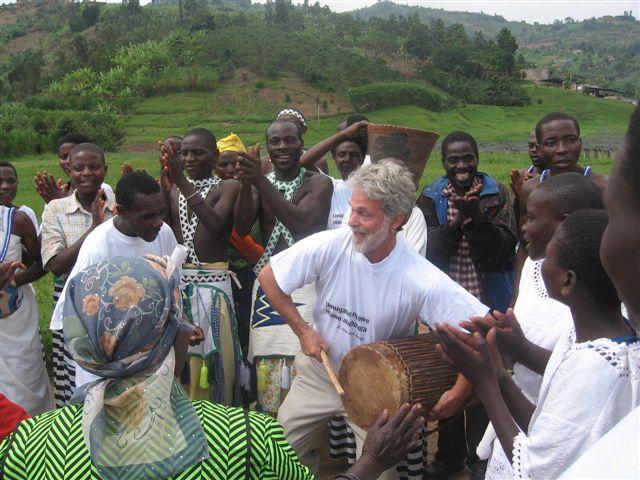I am going to let others speak for me this time.
President Barack Obama, at the Sunday vigil:
“These tragedies must end. And to end them, we must change. … Are we really prepared to say that we’re powerless in the face of such carnage, that the politics are too hard? Are we prepared to say that such violence visited on our children year after year after year is somehow the price of our freedom?”
Former US Senator Gary Hart—”Real Minutemen, Rise Up,” on Huffington Post:
Let’s have a new, sober, serious, non-paranoid gun organization whose members are the sane, thoughtful, responsible sportsmen who share the belief of the vast majority of Americans that assault weapons have no place in U.S. society. These mature minutemen also share the belief that state licensing of weapons, checks for criminal and mental backgrounds, and elimination of unregulated gun shows are necessary for a secure society.
We continue to spend hundreds of billions, even trillions, of tax dollars to achieve the elusive goal of national security. The movie-goers of Aurora, the little children of Newtown, were not secure. Those children are just as dead as if al Qaeda had killed them. Killing children is not a political issue: it is a moral issue.
The militia of the Constitution, now the National Guard and Reserve forces, are composed of serious, responsible citizens. Many are hunters and fishermen. They do not require an organization with a central message of paranoia to represent them. They should now form their own organization to speak for them and the great majority of gun owners would join them.
Juan Cole—”Questions I ask myself about Connecticut School Shooting“, Informed Comment
Why doesn’t anyone blame George W. Bush for these mass shootings? He’s the one who led the charge to let the assault weapons ban expire. Why aren’t the politicians in Congress who take campaign money from assault weapons manufacturers ever held accountable by the public?…
What in the world does the 2nd amendment have to do with these incidents? Do they look like a “well-regulated militia” to you? Semi-automatic weapons are the 18th-century equivalent of artillery in terms of their ability to kill. Do you think people should be allowed to have artillery pieces in their back yards, too? Is this some sort of sick joke, that you are telling us our children have to die because the Founding Fathers wanted madmen to have high-powered weaponry?…
Why aren’t there more class-action lawsuits against the people responsible for the proliferation of high- powered weaponry in our society? Lax gun laws and inadequate security checks in Mississippi, West Virginia and Kentucky and 7 other states meant that they supplied nearly half the 43,000 guns traced to crime scenes in other states in one recent year. The guns aren’t randomly acquired, and they aren’t used or Saturday night specials. They come disproportionately from specific states…
Why doesn’t anyone on television news ever simply give this statistic: In one recent year, there were 39 murders by gun in the UK, but 9,000 in the United States? Why is it wrong to let Americans know how peculiar is the situation Americans have to live in?
Rabbi Arthur Waskow, The Shalom Center (from his 12/16/12 newsletter,not yet posted on his website):
The address and phone number of the NRA (National Rifle Association) are 11250 Waples Mill Rd, Fairfax, VA 22030; (703) 267-1000. Please call…through the week. (In Jewish tradition, “sitting shiva” to mourn the dead takes seven days.). If you get a busy signal, Good! That means many people are calling; please keep calling for as long as you have the time. When you get through, ask for Wayne LaPierre (NRA’s executive director) and when you reach his office begin reading the names of the Newtown Connecticut dead that are listed above. When you have read some of the names, say that you insist the NRA announce it supports a Federal law prohibiting assault weapons and semi-automatic weapons and supports a Universal Background Check. This should not take more than five minutes. When you have done this, please drop me a note at Office@theshalomcenter.org
George Lakoff, “The Price of Our Freedom,” Huffington Post:
Total registration, just like with cars. An end to automatic and semi-automatic weapons. And an end to blaming massacres on crazies. Gun massacres require guns that can massacre. Eliminate them.
Filmmaker/Activist Michael Moore, in a speech Friday night in NYC:
Other countries, I mean, they have their crazy people, and they have people that—there have been shootings and killings in Norway, in France and in Germany. But there haven’t been 61 mass killings like there have been in this country just since Columbine. Sixty-one mass shootings in this country… We invade countries. We send drones in to kill civilians. We’ve got five wars going on right now where our soldiers are killing people—I mean, five that we know of. We are on the short list of illustrious countries who have the death penalty. We believe it’s OK to kill you when you’ve committed a crime.
And then we have all the other forms of violence in this country that we don’t really call violence, but they are acts of violence. When you—when you make sure that 50 million people don’t have health insurance in your country and that, according to the congressional study that was done, 44,000 people a year die in America for the simple reason that they don’t have health insurance, that’s a form of murder. That murder is being committed by the insurance companies. When you evict millions of peoples—millions of people from their homes, that’s an act of violence. That’s called a home invasion.
Later today I’ll post some resources for helping children deal with grief.





